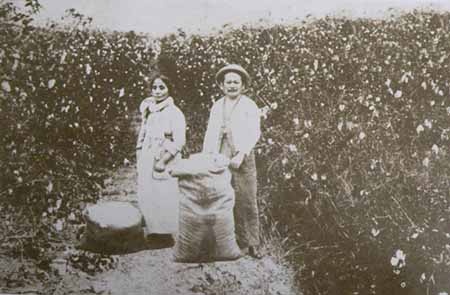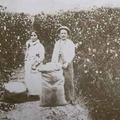If there is anything more fascinating than the history of a single group or nation, it is the history of diverse groups, whether very similar or very different, that when joined together create a precedent. That is the case of the episode involving the deportation of citizens of Japanese ancestry living in Peru to relocation camps in the United States during World War II.1
Prior relations
The history shared by Peru, Japan, and the United States encompasses many years and varied facets. That said, it is worth remembering that those relations have usually been bilateral.
From the days of the [Augusto B.] Leguía presidency [1908-1912 and 1919-1930], the United States and Peru have had an increasingly evident approximation both politically and economically. This proximity continues to this day, while during various periods it exerted an important influence on Peru’s modernization, crises, economic benefits, and political decisions.
On the other hand, Japan and Peru have shared a more recent history, beginning with the migrations in the early part of the 19th century, which led numerous citizens of the empire to become employed as field hands in Peruvian farms – a labor force that was needed for the country’s agricultural development. This process, as can be extensively attested in the Nikkei2 (??) 3 historiography, began with rural workers, but later expanded into the handicraft, commercial, and urban sectors. In time – and as a result of historical circumstances – the Nikkei community was transformed into one more facet of Peruvian culture and society.
No less fascinating is the history shared by Japan and the United States, which began with the sakoku (??) [literally, “closed country” or “chained country”] opening, following the arrival of American Commodore Matthew Perry in Yokohama in 1854. That led Japan to effect a series of changes that shortly thereafter would place the country among the biggest world powers, while transforming its inhabitants into citizens eager to learn and understand the Western world. It is precisely with the Meiji Restoration that Japan will begin to effect a series of political changes corresponding to the global phenomenon of expansionism and domination, a process that will reach its apex with the country’s participation in World War II.
It’s precisely at this moment in history that the three countries in question share an episode that it is both important and healthy to consider, for it is partly the result of the political history of the involved countries, as well as of their economies, and mostly of the memory experienced by their societies.
First steps
In 1981, the Commission on Wartime Relocation and Internment of Civilians aimed to achieve the objective of all truth commissions; in other words: getting to know the facts, recognizing and understanding what happened, and from there – and as was the case with this particular commission – offering an official apology and civil reparations to the Japanese Americans held in relocation camps during World War II. 4
That measure was only slowly implemented. Some authors state5 that well before 1981 – as early as, at least, 1947 – the American government was already aware of its duty to disburse civil reparations, something that would only take place after the creation of the Civil Liberties Act of 1988. Between 1995 and 1999, an intensively active campaign6 takes place under the aegis of the United States Justice Department, which offered to the more than 4,000 still-missing Japanese Americans payment corresponding to their civil reparation ($20,000), and detailing the efforts of the Justice Department to find them.
However, it was only in 1998 that the American government extended the reparations to other groups besides the “Japanese Americans 7,” taking up the task of calling forth a group that had been important to that government in its exchange of prisoners during World War II: the Japanese Latin-Americans8.
The Nikkei historiography has recorded invaluable testimonies from those who had been exiled (whether they had returned to Peru or remained in the United States), but there remains a void in the analysis of this phenomenon. Was it merely conjunctural? Was it the result of the xenophobic character of Peruvian society in those days? Was it some form of groundless fear? Did it match economic interests? What could have been at stake in the protection of citizens of German, Italian, or Japanese ancestry within the context of the Western Hemisphere? And one question that is necessary: what was done or what can be done about it?
Peru in the 1930s
It is undeniable that despite its wide diversity, and its warm and joyful character, there have been moments in history during which Peruvian society was somewhat fearful of immigrants of non-European background, for, since colonial times, European culture has been the most widespread for historical reasons.
Considering the leaflets, flyers, and more solid newspapers such as the daily “La Prensa,” and the measures implemented by the [military] governments of [Luis] Sánchez Cerro [1931-1933] and [Oscar] Benavides9 [1933-1939], in the ‘30s the Nikkei community was the focus of attacks based on irrational justifications, such as accusations that the Japanese carried contagious diseases, that they were a strange race to which the country’s door should not be opened so easily, that they were “ugly soldiers of the Empire,” and other issues that demonstrate a repulsion for the community – repulsion usually referred to as xenophobia.
Having an irrational nature, xenophobia10 feeds off of fears directed at a human group perceived as different, strange, closed. If the real world provides a minuscule reason to feed those fears, the irrational repulsion may take an active form. That is exactly what happened to the Japanese community in Peru during that time.
Some authors, among them Daniel Masterson11, affirm that before the Japanese attack on Pearl Harbor, any type of attitude that implied hostility toward the Nikkei community would have been groundless. However, before Japan’s active participation in World War II attacks against the community had already taken place, as can be attested by both photographic and printed sources. Additionally, there remain those who can still remember such incidents.
Although before the beginning of the War a sector within Peruvian society (followers of the above-mentioned Sánchez Cerro Party) had already demonstrated their stance in regard to the Japanese community, it is important to remember that theirs was not a unanimous posture.
The official sector – in other words, the State’s official policy – had already displayed a certain caution in regard to the freedoms allowed to the community; measures that to a certain extent could be interpreted as a way to care for the interests of the average Peruvian citizen.
NOTES:
1. This article is based on a presentation made on November 6, 2008, at the 18th International Colloquium of History Students at the Pontifical Catholic University of Peru. My thanks to the organizers for having allowed and provided a debate about this subject matter at their event. I would also like to thank Iván Hinojosa, who revised my first and second drafts, and whose suggestions resulted in a more precise text. I would also like to express my gratitude to José Ragas for motivating me to continue my investigations in addition to providing interesting comments and contributions both at the Colloquium and outside it. And to my relatives and friends who collaborated in the discussion of topics of interest and who contributed with their vision about a subject that is both important and necessary to discuss.
2. The authors consider the arrival of the Sakura Maru (???.) as the beginning of the immigration process. See: JAPANESE PERUVIAN ASSOCIATION. Centenary of the Japanese Immigration to Peru 1899 – 1999. Commemorative Commission of the Centenary of Japanese Immigration to Peru. Lima, 2000.
FUKUMOTO, Mary. Hacia un nuevo sol. (There shone a new sun) Lima: Japanese Peruvian Association of Peru, 1997.
MORIMOTO, Amelia. Los japoneses y sus descendientes en el Perú. (The Japanese and their descendants in Peru) Lima: Editorial Fund of the Peruvian Congress. 1999.
SAKUDA, Alejandro. El futuro era el Perú. (The Future Was Peru) Lima: ESICOS 1999.
THORNDIKE, Guillermo. Los imperios del Sol. (The Empires of the Sun) Lima: BRASA 1996.
3. This term is composed by the kanjis ?, meaning “of the sun” or “Japanese,” and ?, meaning lineage, genealogy; therefore, Nikkei means “of Japanese ancestry,” in other words, Japanese immigrants (the overseas Japanese) and their descendants. Although in some cases that denomination has been applied to those with an affinity for Japanese culture, even those belonging to other ethnic groups, the original meaning was adopted for this text.
4. BECERRA, Xavier and LUNGREN, Dan. The Original Crystal City.
http://www.aiipowmia.com/inter27/in240207crystalcity.html
5. YOUNG, Michael. "Texas camps were home to Latin American Japanese internees during WWII" in The Dallas Morning News. Texas, May 23, 1999.
6. UNITED STATES DEPARTMENT OF JUSTICE. Ten year program to compensate japanese americans interned during World War II closes its doors.
http://www.usdoj.gov/opa/pr/1999/February/059cr.htm
UNITED STATES DEPARTMENT OF JUSTICE. Justice Department seeks help in locating potential japanese-american redress recipients before the program closes in August 1998.
http://www.usdoj.gov/opa/pr/1997/January97/041cr.htm
UNITED STATES DEPARTMENT OF JUSTICE. Justice Department seeks help in locating more than 4000 potential japanese - american redress recipients.
http://www.usdoj.gov/opa/pr/Pre_96/June95/321.txt.html
7. In regard to this terminology, it is important to clarify that in the American press and historiography, a “Japanese American” is a Nikkei settled in the United States. The others are referred to as “Japanese Latin-Americans.” Even if we disagree with such terminology, considering that all those originating from the American continent are Americans, in order to facilitate the reading of both the text and the cited references, the term “Japanese American” should be understood as applying solely to the Japanese in the United States.
8. UNITED STATES DEPARTMENT OF JUSTICE. Japanese Latin Americans to Receive Compensation for Internment During World War II.
http://www.usdoj.gov/opa/pr/1998/June/276.htm.html
9. MORIMOTO, op. cit. pp. 98-100, SAKUDA, op. cit. 211-225. (Sakuda has available a large quantity of journalistic sources of the period and features transcripts from newspapers)
10. Used according to the Dictionary of the Spanish Language, in other words: hatred, repugnance, or hostility directed toward foreigners.
11. MASTERSON, Daniel. The Japanese in Latin America. Chicago: University of Illinois Press. 2004. p. 154.
* This article has been published through an agreement between the Japanese Peruvian Association (APJ) and the Discover Nikkei Project. This article was originally published in APJ’s magazine Kaikan Informativo, issue 39, December 2008.
© 2008 Yukyko Takahashi Martínez




